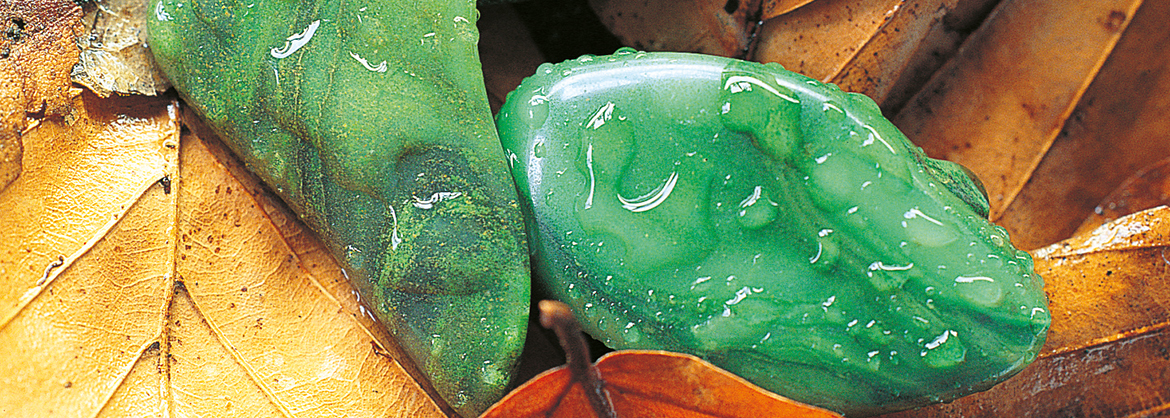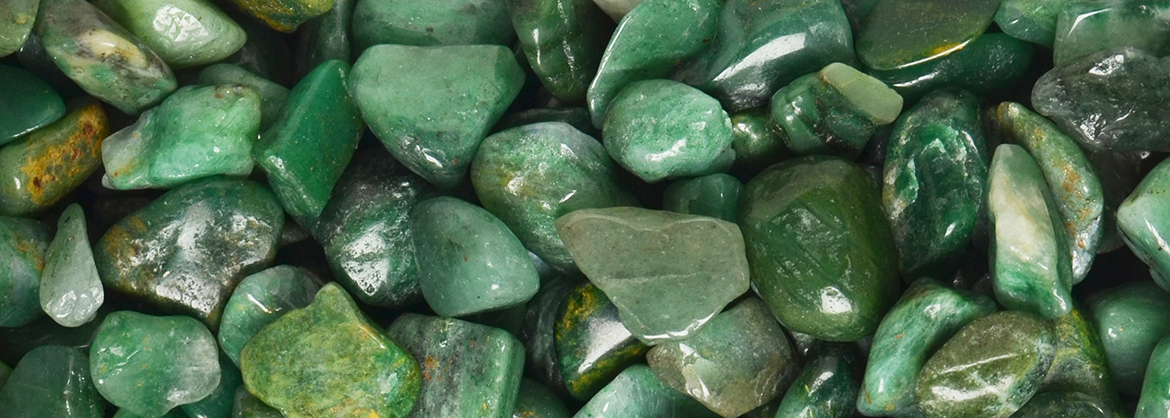
Prase - bearing, effect and application of the green gemstone
In times of contemplation, the green Prase is a valuable companion when it comes to mindfully and objectively deal with the conflicts that arise on the darker days. He gives us the sometimes missing restraint and cools and cools down heated tempers so that we can continue to get along well with our fellow human beings despite all our differences. And if the fronts are nevertheless once hardened, the stone supports us to approach each other and to reconcile. In this way, controversies can be with our environment fought out and past be worked through, before the dark season finally begins.
Mineralogical profile Prase
Chemical formula: SiO2
Mineral Class: Oxide, Quartz Group
Origin: Rarely primarily from hydrothermal solutions on fractures and rock cavities, often tertiary by metamorphism of quartz-, calcium-, iron- and magnesium-rich rocks. In the process, fine, acicular, green calcium-magnesium-iron silicates are formed (for example, Actinolite) that become trapped in quartz.
Color: leek green due to inclusions such as amphiboles like actinolite or hedenbergite
Gloss: glass luster
Crystal system: trigonal
Mohs hardness: 7
Cleavability: no splitability, conchoidal fracture
Localities, main supplying countries: South Africa, Australia, Greece
Appearance: coarse masses, rarely crystals
Use: Prase is widely used as a gemstone due to its intense emerald green color.
Gemstone astrology uses it to help Aries and Sagittarius-born people to be cool-headed and clear-minded.
Availability: rare
Confusion: can be confused with quartz containing chlorite, with Plasma (green Chalcedony) and Jade.

Localities and main supplying countries of Prase
The best-formed Prase crystals in the world come from the island of Serifos (Greece). They were found in the 1980s and early 1990s in a skarn (old Swedish miner's term for a group of exceedingly heterogeneous rocks of metamorphic or metasomatic origin). The partly pencil-thick crystals grow up to 14cm long. They contain inclusions of Ca, Fe, Mg Actinolite; the color range is from light green to almost black green.
Origin of the name Prase and synonyms
The name Prase is derived from the Greek word "prasos" meaning "leek" and refers to the leek-green color of the stone. In ancient times and the Middle Ages, all "base" green quartz was referred to as Prase. Synonyms are. Leek Quartz, Emerald Mother, Emerald Quartz, Budstone, and African Jade.
Applications and use of Prase in gemstone healing
In gemstone healing, Prase is popularly used when gentleness and composure are to be strengthened. The green Prase conveys patience, equanimity and cools down heated tempers when things have gotten heated again. Control and self-determination are supported, so that one can gently come back to oneself. Worries and concerns fade into the background. It has a calming effect and helps especially resentful people to reconcile. As a massage stone, Prase is especially suitable for for draining and relaxing applications, for example, in the evening after a busy day. Also for the Ansetzen of cooling Gemstone Water Prase is used with pleasure.
Hildegard von Bingen recommended in her "Book of the stones" the Prase with the words: "Who has burning fever, he wrap the Prase in some dough of rye bread and the so wrapped he binds in a cloth, and so he leaves him bound for over his navel for three days and nights, and the fever will go away from him."
Astrologically, Prase fits the zodiac signs of Aries and Sagittarius, which are said to keep a cool head and a clear mind through him. Prase is associated with the fourth, the heart chakra.

